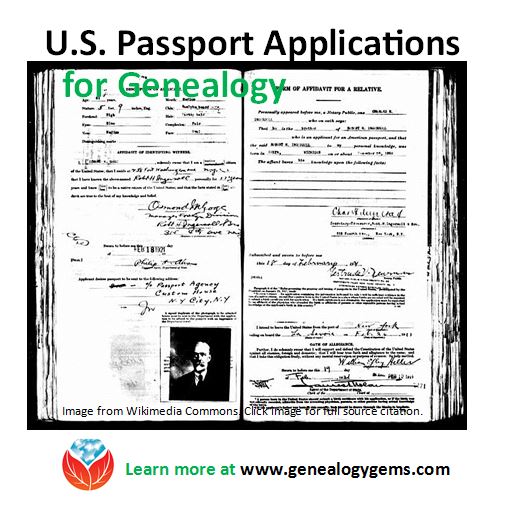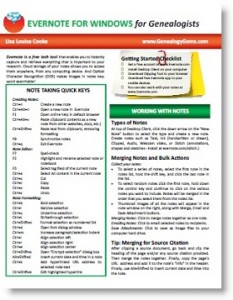We Dig These Gems! New Genealogy Records Online
 Here’s our weekly roundup of new genealogy records online. Do you see anything you should be searching for your ancestors?
Here’s our weekly roundup of new genealogy records online. Do you see anything you should be searching for your ancestors?
Featured: U.S. – SOUTH DAKOTA CENSUS. The 1945 South Dakota state census collection at Ancestry.com has been updated. According to a FamilySearch.org collection description (where it can also be searched for free), “This 1945 South Dakota State Census is an every-name list of the state’s inhabitants as of 1945. The records are handwritten on printed cards and are arranged alphabetically by surname. People enumerated in the census are recorded individually; the census records do not show individuals in family groups.” It’s wonderful to see census records access pushing past that 1940 blackout!
AUSTRALIA VITAL RECORDS. Findmypast.com has updated collections of birth, marriage and death records for Western Australia. Transcripts for all three record sets appear to be taken from original civil registrations, which began in 1841.
SPAIN MUNICIPAL RECORDS. A free collection of Cádiz municipal records (1784-1956) has been updated with over 155,000 new browsable images at FamilySearch.org. The full collection (some of which is indexed) includes “civil registration records, censuses, military records, and other miscellaneous records microfilmed and digitized at municipal archives in the province of Cádiz, Spain.”
U.S. – LOUISIANA WILLS/PROBATE. Ancestry.com’s collection of wills and estate records for Louisiana (1756-1984) has been updated. Indexed images represent nearly 3/4 of Louisiana parishes.
U.S. – NEW YORK CHURCH. Findmypast.com has updated its collection of New York State Religious Records, 1716-1914. Find indexed images of baptisms, marriages and deaths from dozens of churches from various denominations. You can even search by denomination, church name, county or full text.
U.S. – NORTH CAROLINA MARRIAGES. There’s a new index with over 53,000 entries from North Carolina civil marriage bonds and certificates (1763-1868) at FamilySearch.org. Click here to see a description of the index’s coverage.
U.S. – NORTH DAKOTA FUNERALS. An index to records from North Dakota funeral homes hosted by the Red River Genealogical Society is newly indexed at Ancestry.com and can be searched for free. (Click here to search the index on the host website.)
More Genealogy Record Gems
U.S. State Census Records: Capture Your Family History Between Federal Censuses
3 Strategies for Finding Catholic Church Records
U.S. Passport Applications: Finding Immigrant and Traveling Ancestors
Digital Family History Book Collection Hits 200k!
A milestone 200,000 digital family history books are now online at the multi-library Family History Books collection at FamilySearch.org. The growing collection, which began in 2007, includes “family histories, county and local histories, genealogy magazines and how-to books, gazetteers, and medieval histories and pedigrees,” according to the landing page.
Last time I looked for books here, I found one on my Homer ancestors. This time around, I found another gem: a book of children’s stories written about these ancestors! Digitally-archived volumes like county and local histories, published family histories and others are so valuable because they are immediately accessible and because they are keyword-searchable. Try these keyword search strategies:
- Look for only a surname (in case the first name is written different ways or a different relative is mentioned).
- Search for the name of a neighborhood, street, church, school, business, type of work or other keywords that pertain to your family.
- Use the Advanced Search feature to focus your search for a keyword in a title, type of publication (periodical, etc).
Once you’re reading a book, you can click on the info icon (a circle with an “i” in it on the upper right) to see more information about the book, including source citation and copyright information.
While the number of volumes online skyrockets, the online Viewer for reading them is only gradually improving. Here’s a TIP from FamilySearch staffer Dennis Meldrum: “Safari does not work well with the Viewer.” Neither do mobile devices like the iPhone or iPad. “The Viewer works best with IE or Firefox. It also works with Chrome, but the Adobe Tools do not work. We are aware of the limitations of the Viewer and are working to replace it by the end of the year.”
 Want to keep track of which genealogy books are on your shelf and which you’ve found online? Create an Evernote genealogy library! Click here to learn how to do that with books on your shelf, and then add additional titles with the links in Evernote. Sharpen your Evernote skills for genealogy by becoming a Genealogy Gems Premium member. This gives you a full year’s access to our Ultimate Evernote for Genealogy Education, with five (so far) full-length video classes for beginner to expert and five mini-sessions, too.
Want to keep track of which genealogy books are on your shelf and which you’ve found online? Create an Evernote genealogy library! Click here to learn how to do that with books on your shelf, and then add additional titles with the links in Evernote. Sharpen your Evernote skills for genealogy by becoming a Genealogy Gems Premium member. This gives you a full year’s access to our Ultimate Evernote for Genealogy Education, with five (so far) full-length video classes for beginner to expert and five mini-sessions, too.
2 Evernote for Genealogists Must-Have Tips
 Evernote is certainly the fastest-growing (and FREE) note-taking technology out there, so it’s no wonder that it is incredibly popular with genealogists. But there’s a lot packed into it and I’ve noticed that many genealogists aren’t taking full advantage. Here’s are two of my favorite tips that I use all the time from my brand new Evernote for Windows for Genealogists cheat sheet:
Evernote is certainly the fastest-growing (and FREE) note-taking technology out there, so it’s no wonder that it is incredibly popular with genealogists. But there’s a lot packed into it and I’ve noticed that many genealogists aren’t taking full advantage. Here’s are two of my favorite tips that I use all the time from my brand new Evernote for Windows for Genealogists cheat sheet:
1) Create a New Note: When you’re working on your computer and you want to make a quick note of something in Evernote, you can get there with lightening speed by pressing these quick keys simultaneously: Ctrl+Alt+n.
2) Instant Note Search: What if you are knee deep in your research and you have a note that you need to quickly reference? Simply press Win+Shift+f from anywhere on your computer and Evernote will instantly open with your cursor in the search box ready to type a keyword and search!
Try these Evernote tips now! And then get LOADs more helpful tips in this 4 page laminated Quick Reference Guide, like:
- Getting Started Checklist
- Quick Keys to speed up your use of Evernote
- Specialized Note-taking Actions
- How to Get the Most Out of Clipping
- Tips for Maneuvering the Desktop Client
- Genealogical Organization Suggestions
- Little Known Search Strategies
- Source Citation Tips, and Using Reminders
Evernote for Windows for Genealogists – U.S. shipping
Evernote for Windows for Genealogists – International shipping
More Resources
How to Get Started in Evernote, and the Ultimate Evernote Education
How to Add Text to a Web Clipping in Evernote
Should Evernote be my Digital Archive?
Genealogy Just Got More Exciting! The 1940 Census is Here
It’s not every day that a new record group becomes available that will help you learn more about your family history. But yesterday, April 2, 2012 was one of those special days! Who will you be looking for? Do you plan on volunteering to help with indexing?
National Archives Releases 1940 Census
Washington, D.C. . . Ever wondered where your family lived before WWII; whether they owned their home; if they ever attended high school or college; if they were born in the United States, and if not, where? Unlocking family mysteries and filling in the blanks about family lore became much easier today with the release of the 1940 census by the National Archives and Records Administration. By law the information on individuals in the decennial censuses, which is mandated by the U.S. Constitution, is locked away for 72 years.
In a 9 A.M. ceremony in the William G. McGowan Theater, Archivist of the United States David S. Ferriero declared the 1940 census officially open. This is the 16th decennial census, marking the 150th anniversary of the census. Performing the first search, Mr. Ferriero said, “It is very exciting for families across America to have access to this wealth of material about the 1930s. Many of us will be discovering relatives and older family members that we didn’t know we had, picking up threads of information that we thought were lost, and opening a window into the past that until now has been obscured We now have access to a street-level view of a country in the grips of a depression and on the brink of global war.”
Dr. Robert Groves, Director of the U.S. Census Bureau added: “Releasing census records is an odd event for us; we spend all our lives keeping the data we collect confidential. However, once every 10 years, we work with the National Archives and Records Administration to release 72-year old census records that illuminate our past. We know how valuable these records are to genealogists and think of their release as another way to serve the American public.”
For the first time, the National Archives is releasing an official decennial census online. The 3.9 million images constitute the largest collection of digital information ever released by the National Archives. The free official website http://1940census.archives.gov/, hosted by Archives.com, includes a database of Americans living within the existing 48 states and 6 territories on April 2, 1940.
“There is a great synergy between the National Archives and Archives.com stemming from our passion to bring history online,” said John Spottiswood, Vice President, Business Development, Archives.com. He continued, “It has been a tremendous opportunity to work with the National Archives to bring the 1940 census to millions of people, the most anticipated record collection in a decade. In a short period, we’ve built a robust website that allows people to browse, share, print, and download census images. We encourage all to visit 1940census.archives.gov to get started on their family history!”
The census database released today includes an index searchable at the enumeration district level. An enumeration district is an area that a census taker could cover in two weeks in an urban area and one month in a rural area.
To make the search for information easier, the National Archives has joined a consortium of groups to create a name-based index. Leading this effort, FamilySearch is recruiting as many as 300,000 volunteers to enter names into a central database.
Questions asked in the 1940 census, which reflect the dislocation of the Great Depression of the 1930s, will yield important information not only for family historians and genealogists, but also for demographers and social and economic historians. We learn not only if a family owned or rented their home, but the value of their home or their monthly rent. We can find lists of persons living in the home at the time of the census, their names, ages and relationship to the head of household. For the first time the census asked where a family was living five years earlier: on April 1, 1935. This information might offer clues to migration patterns caused by the Dust Bowl and the Great Depression. For the first time in the census, a question relating to wages and salary was asked. Persons 14 years old and over were asked questions regarding their employment status: Were they working for pay or profit in private or nonemergency government work during the week of March 24–March 30, 1940? Were they seeking work? How many hours did they work during the last week of March? How many weeks did they work in 1939? What was their occupation and in what industry?


